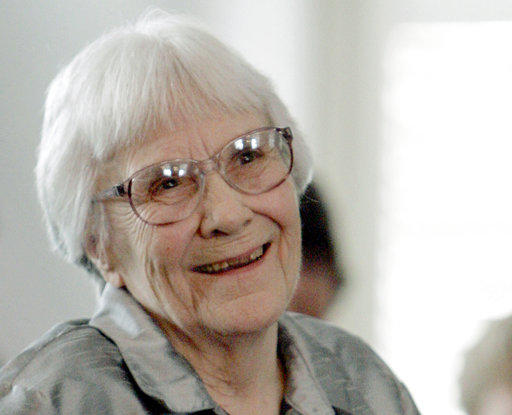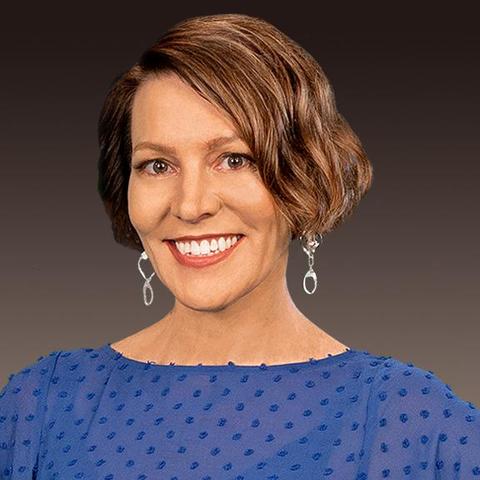Section Branding
Header Content
'Furious Hours' Reveals Harper Lee’s Unfinished Book
Primary Content
Tens of millions of readers got their first glimpse inside of a courtroom from To Kill a Mockingbird. Now, Harper Lee's 1960 novel remains a staple on middle school reading lists, and the film adaptation has captivated countless social justice warriors, law students, parents and pet owners.
On Second Thought Host Virginia Prescott speaks with Casey Cep.
Lee spent years writing about another case in an Alabama courtroom some 17 years later although she never published the intended book. That case and that mysterious book are at the center of Casey Cep’s new book Furious Hours: Murder, Fraud, and the Last Trial of Harper Lee.
Interview Highlights
On the protagonist, Rev. Willie Maxwell
The book is based on a true-crime story surrounding a man known as Rev. Willie Maxwell born in rural Alabama in 1925. He was the son of a black sharecropper.
Like a lot of young boys in this part of Alabama, you know, he's born right on the edge of what was quickly becoming Lake Martin and into what was quickly becoming Jim Crow society. He led a very circumscribed young life around Lake Martin and he then registered for the draft and served in World War II and actually had quite a distinguished military career.
He came back and had a lot of odd jobs on top of preaching, and so he worked at the local textile mill. He was also a Paul Porter, he worked in a local rock quarry, but it was the preaching that he was most distinguished for, and that's why he became so widely known in this part of Alabama.
So, he was the Rev. Willie Maxwell and renowned for his knowledge of scripture and his erudition and his ability to command a sanctuary with his preaching.
On the ease of taking out insurance policies on another person
This was the 1970s, the Wild West of the life insurance industry so fewer regulations then, fewer hurdles for when you took out the policy. You could do it without someone's knowledge if you had their Social Security number. Medical exams are infrequent, and you know correspondence addresses were rarely checked.
So, someone like the Reverend Maxwell could take out 17 policies on the same individual and, because they were smaller denominations, a thousand here and $3,000 there, $5,000 somewhere else. These insurance companies really didn't know how much insurance he held on any given individual.
And, in the case of a wife, it might not have aroused suspicion, and a first wave of dead people was found in 1970, but, by the time a second wave of people was found dead under suspicious circumstances, even the insurance companies took notice.
On why Voodoo becomes the explanation for murder
I think it's certainly one of the things that probably drew Harper Lee to the case because you have in the sort of betwixt and between of where the law can hold someone accountable and where crime proliferates. The need for an explanation.
And that's the space where supernatural explanations often flourish. And, in the case of the rural South, you're talking about Hoodoo and Voodoo and root work in distinct systems of belief. It's sort of on par with the life insurance business.
Really looking into the history of Voodoo, there's a lot of great scholarship now looking at where it came from and how it evolved and how syncratic it was with Christianity, which is why you could have a minister like the Rev. Maxwell, who people really did believe could also be a Voodoo practitioner and whose ministry might well have intersected with common Voodoo practices too, so, as a part of the case from the very beginning and all sorts of rumors proliferated from there.
On Lake Martin’s history and why many people reached for the idea of the supernatural
When I learned about the history buried under its waters, I knew that it needed to be part of the book because this was one of the big hydroelectric power projects in the American South after the Civil War.
The people had been trying to do it for years and finally, in the 1920s, they get together the money, and they get together the apparatus for damming the Tallapoosa River, and they just fill in tens of thousands of acres of land where there had been towns and where there had been schools and where there had been groceries and suddenly all that is underwater.
The people around Lake Martin say every so often you get in a boat and you are out on the lake and you can hear the church bells clanging deep from 150 feet down or just someone gets to spooking you along the boundaries of the lake.
And, even before that early settler history of Alabama, you had Creek Indians walking those grounds and burying their dead there too. It was just one of these kinds of obvious archeological moves for a writer where you need to tell folks about the violence that happened when Harper Lee was there and what she was looking into.
All of that truly is what Harper Lee would've been thinking about, not just this one true-crime case but about crime and violence more generally, and the case takes so many interesting turns.
On Tom Radney’s interest in representing Robert Burns
I think that Tom rightfully had a reputation as one of the best defense attorneys in the state, and he liked hard cases. That's why the reverend had stayed out of jail and managed to collect, in what is today's dollars, half a million dollars in insurance money.
So, of course, when Robert Burns shot the reverend dead in front of 300 people, you needed a good attorney.
In the summer of ‘77, Tom goes right from defending the reverend to defending the man who shot him. And, that case went to trial in the fall of ‘77.
Here comes Tom Rodney and he’s going up against a D.A. who was a very well-regarded lawyer too, and it was said he handled more murder trials than any other D.A. in Alabama history. So it was really just titans going at it, and the fate of Robert Burns was almost secondary for them to the kind of fate and reputation of their legal careers because Tom Radney didn't want to lose a case with half the nation watching, and Tom Young didn't want to lose a case where there were 300 witnesses to the murder.
So, that trial is really kind of at the heart of the book.
On the role Harper Lee and Truman Capote played for each other
Harper Lee said that they were bound by a common anguish. They must have been a little much for the people of Monroeville, for this little town in Monroe County, and going around talking about being anguished or “apart” people.
To some extent, they were just incredibly bright precocious children, and they learned to read early, and they read widely. And so, they just wore their erudition on their sleeves and that must have made it hard for people to put up with them.
But, I think it's also clear that they just did have a worldliness about them and that was everything from obscure Anglican history to the kind of cosmopolitan knowledge of artistic movements or particular symphonies. And, they were just tremendously cosmopolitan people and it's incredible that the two of them grew up just across the fence from one another and then they have this fraught relationship as adults.
They collaborate on In Cold Blood and they help one another out in New York and make social introductions and edit each other's work. But, it seems that In Cold Blood, that collaborative project is one of the things that came between them along with a kind of difference of opinion about how one should be in the world.
That's everything from drinking, to drugs, to the kind of promiscuity that Capote became known for, despite this close almost sibling-like relationship as children is a very fricative relationship as adults.
On In Cold Blood
It came out as a book, then it had been serialized and for issues of the The New Yorker and true crime is one label for it. Capote himself liked to call it a non-fiction novel, and that's a term that I think we know from Harper Lee's letters.
She just chafed at, and, if you think about it for a minute, they're incompatible terms. It's either nonfiction or it's a novel and, sometimes, when we're paying writers compliments, we'll say nonfiction reads like a novel and we mean that it's beautiful and it's lyrical and it kind of operates at the storyteller telling level.
In her case, she really objected to what she felt were sort of exaggerations and fabrications and the ways in which Capote had taken a story she had helped report and turned it into a work of artifice.
In the book she hoped to write, the reverend was really formed in opposition to In Cold Blood. And, she wanted to return to a kind of earlier more scrupulous standards of reportage and hold herself to a higher standard of nonfiction, but that was a place where she came up with a lot of holes when she was in Alex City reporting on this trial, a lot of roadblocks and dead ends.
On filling in gaps in a non-fiction story
Harper Lee knew a great story. It's certainly true that the Rev. Maxwell was an extraordinary individual and this was an incredible set of intricate legal cases.
On the other hand, if you were a writer looking for facts, they were hard to come by in the case of the Rev. Maxwell. If they'd been easier to come by, the police would have convicted him of murder at some earlier point, and the insurance companies would have been able to stop payment on some of these policies, but instead it's very strange and, in some of the deaths of his family members, no cause of death could even be determined.
And, with some of these kinds of small circuit court cases, their records disappeared almost immediately. There was no one she could just set up as a hero and who could be formed in the pages of her book purely heroically, and so, on the one hand, she got what she wanted, which was a complicated story about race and religion in the American South.
On the other hand, it was a complicated story about race and religion, and that left her with a lot of problems in the writing.
On Harper Lee’s emotional state during this time
She just has these tremendous pressures and expectations from her agent, from her publishers, from the public, and that's what how it happens with any writer who's lucky enough to write a successful book. She is also someone who, even before that, had this idea that you really had to suffer for your work and you should slave over every sentence and if it's not difficult it's not good.
And, beyond that, you know she had a kind of emotional volatility that people would say she suffered from depression or that she had kind of high highs and low lows just interpersonally. You know, did she drink because she couldn't write, or could she not write because she drank, and was she depressed because she couldn't write or did not writing lead to exacerbating her depression?
But, there's a lot going on for her ever since she published Mockingbird in 1960.
On Harper Lee giving up on the Reverend
The truth is we don't know all that much about what Harper Lee thought about anything because she was so private and there was no privacy deeper than the kind she maintained about her work. That again is part of this ancient notion of artistry is suffering and turning inward and just leading a life of the mind and a kind of solitary life as a writer.
Now, having said that, I do feel I have to lift up the possibility that there's a manuscript sitting in Monroeville because, when you go and talk to people who knew her at this time there are some who think she wrote the whole thing and decided not to publish it.
And that was one of the delightful mysteries for me when I was reporting at the kind of roller coaster of what people close to her had been told or what they expected. And, I wanted to maintain some of that for readers because you're along for the journey of her taking on this project and she lived a long time after she worked on the reverend around Alex City. But, just because she didn't publish it doesn't mean she didn't write it.
Get in touch with us.
Twitter: @OSTTalk
Facebook: OnSecondThought
Email: OnSecondThought@gpb.org
Phone: 404-500-9457



